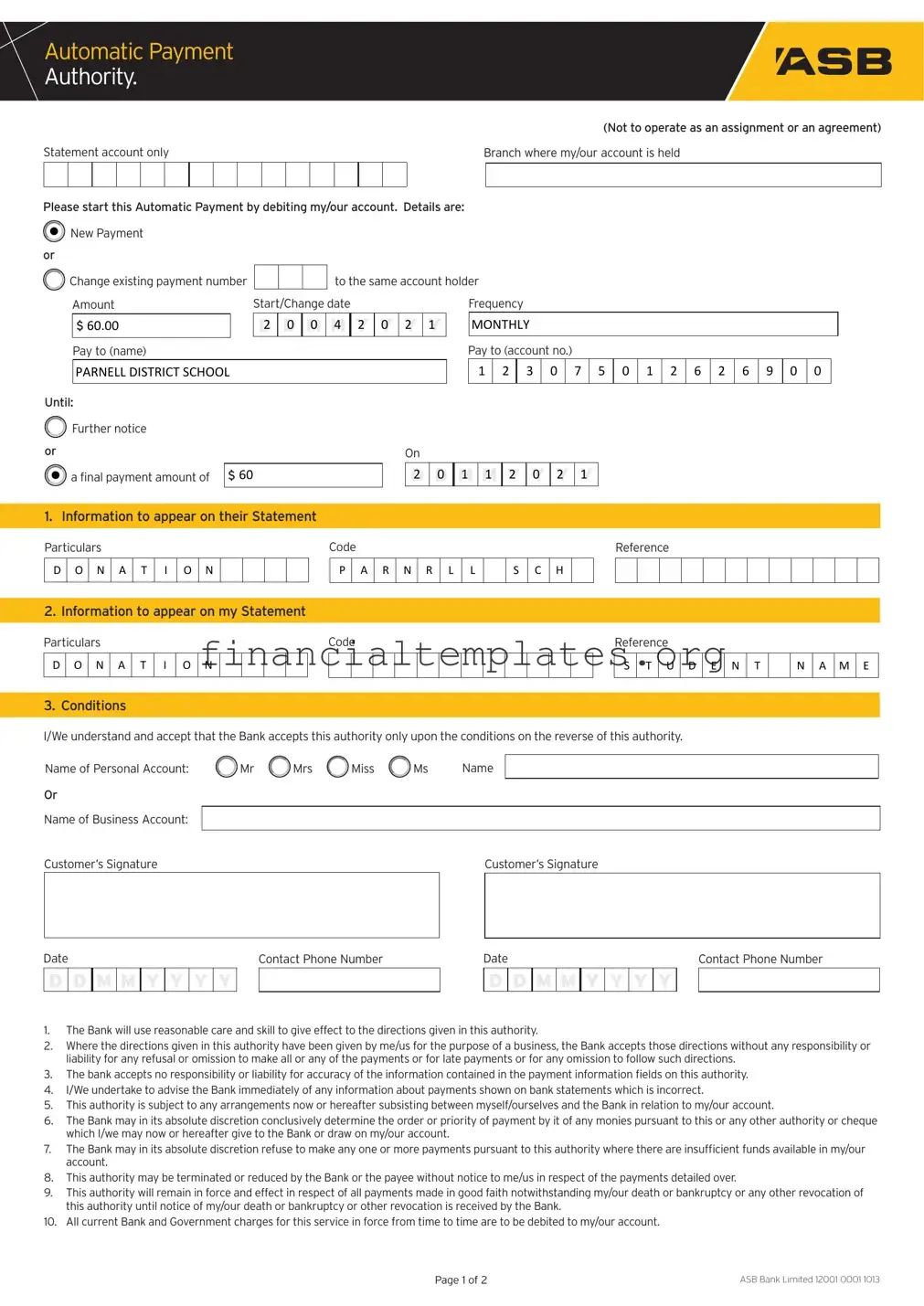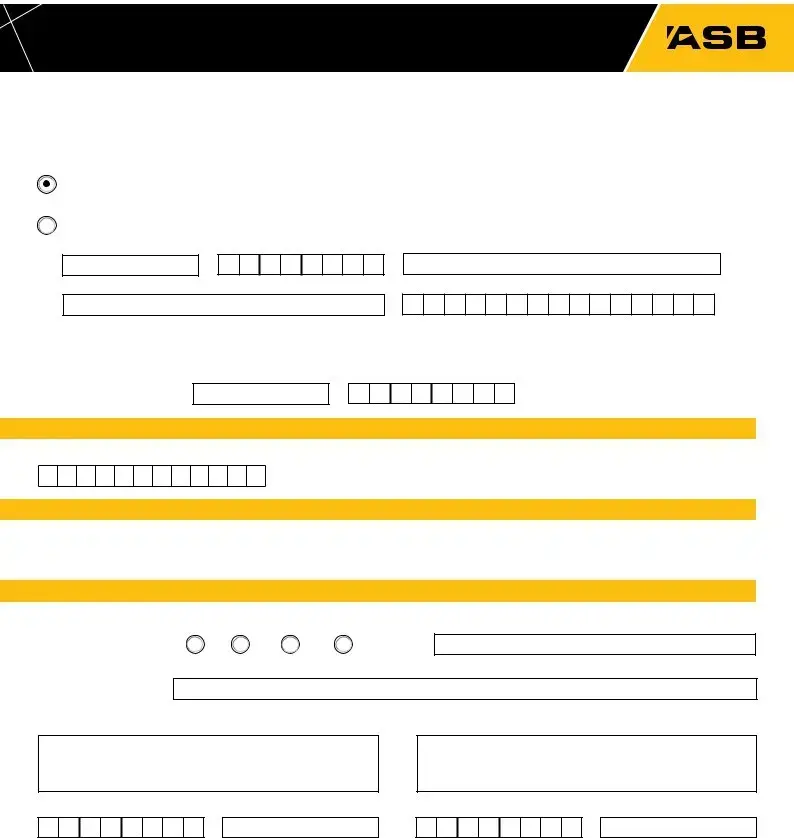The Direct Debit Authorization Form is closely related to the ASB Bank Automatic Payment Form. Like the ASB form, it allows a person or business to give permission to a bank to withdraw funds from their account regularly to pay for a service or settle an invoice. Both documents specify the amount, frequency, and details of the payee, ensuring that payments are made automatically without requiring manual intervention each time. This similarity simplifies recurring transactions for both payer and payee.
A Standing Order Mandate shares similarities with the ASB Bank form by acting as an instruction to a bank to send payments at regular intervals to another account. It details the payment amount, frequency, and recipient information, similar to the ASB form. However, standing orders are set up directly between bank accounts, and the account holder controls them, providing a straightforward way to manage recurring payments, like rent or subscription services.
The Electronic Funds Transfer (EFT) Authorization Form closely resembles the ASB Bank Automatic Payment Form. It provides the necessary authorization for transferring funds electronically from one account to another. Both documents include crucial details such as the amount, frequency, and recipient account information. EFTs cover a wide range of electronic payment types, making this form versatile for various transactions, from payroll to bill payments.
The Credit Card Authorization Form is another document that shares similarities with the ASB form, allowing merchants to charge a customer's credit card for goods or services. This document, like the ASB form, details the payment amount and frequency, but it's specifically designed for credit card transactions. It serves as a pre-approval from the cardholder to process recurring or one-time charges, ensuring a smooth transaction process for ongoing services or payments.
The Payroll Deduction Authorization form is akin to the ASB Bank form in its function to facilitate regular deductions from an employee's paycheck. It typically specifies the deduction amount, frequency, and purpose, similar to how the ASB form outlines automatic payments to third parties. This similarity is crucial for setting up consistent deductions for benefits, contributions, or loan repayments directly from an employee's salary.
Online Bill Pay Setup Forms offered by many banks or service providers mirror the ASB Bank Automatic Payment Form's purpose by enabling customers to automate the payment process for recurring bills. These forms capture information about the payee, the payment schedule, and the account from which funds should be debited. This streamlines the bill payment process, ensuring timely payments without manual intervention each month.
An Insurance Premium Auto-Debit Form is also similar to the ASB form. It allows policyholders to automate their premium payments, ensuring they don't lapse due to missed payments. Both documents require the account holder's authorization, specifying payment frequencies, amounts, and recipient details. This automated process helps maintain continuous coverage without the need for policyholders to remember to make manual payments.
Finally, the Loan Repayment Direct Debit Form resembles the ASB Bank Automatic Payment Form. It authorizes a financial institution to automatically deduct loan repayments from a borrower's bank account at regular intervals. Both share the purpose of ensuring timely payments for a financial obligation, detailing the amount, frequency, and timing of deductions, reducing the risk of late or missed payments and simplifying the management of financial commitments.


 Further notice
Further notice a final payment amount of $
a final payment amount of $ 